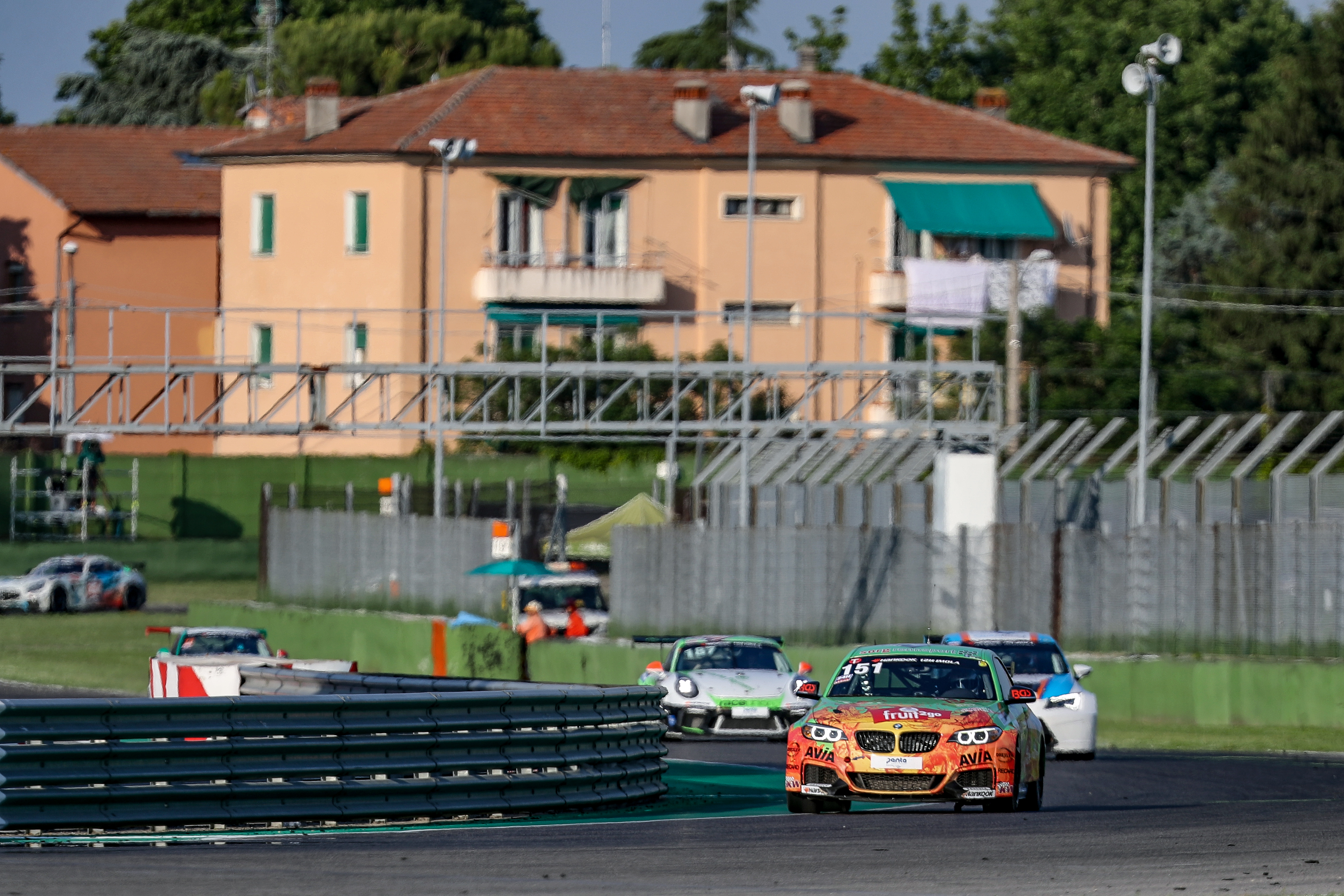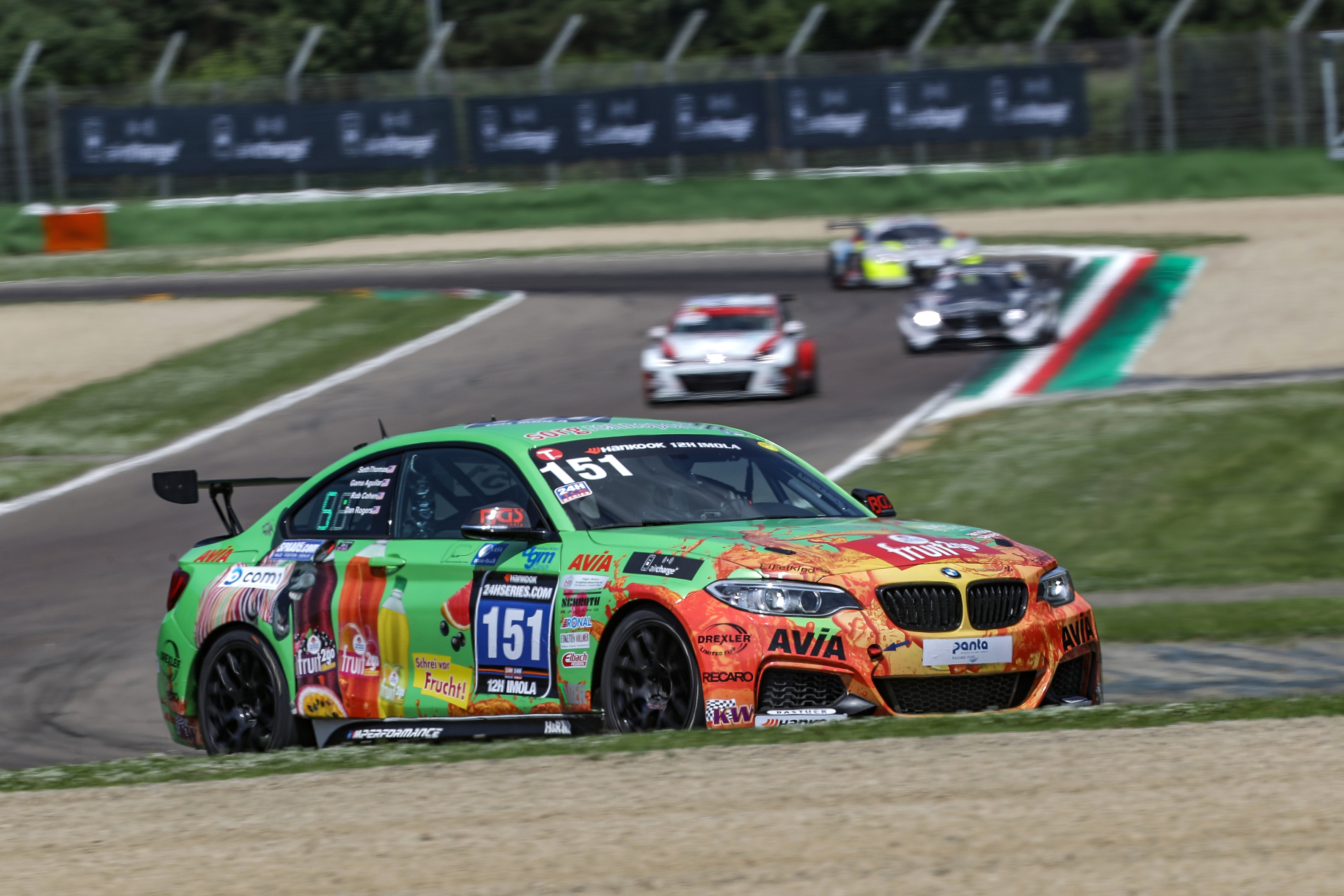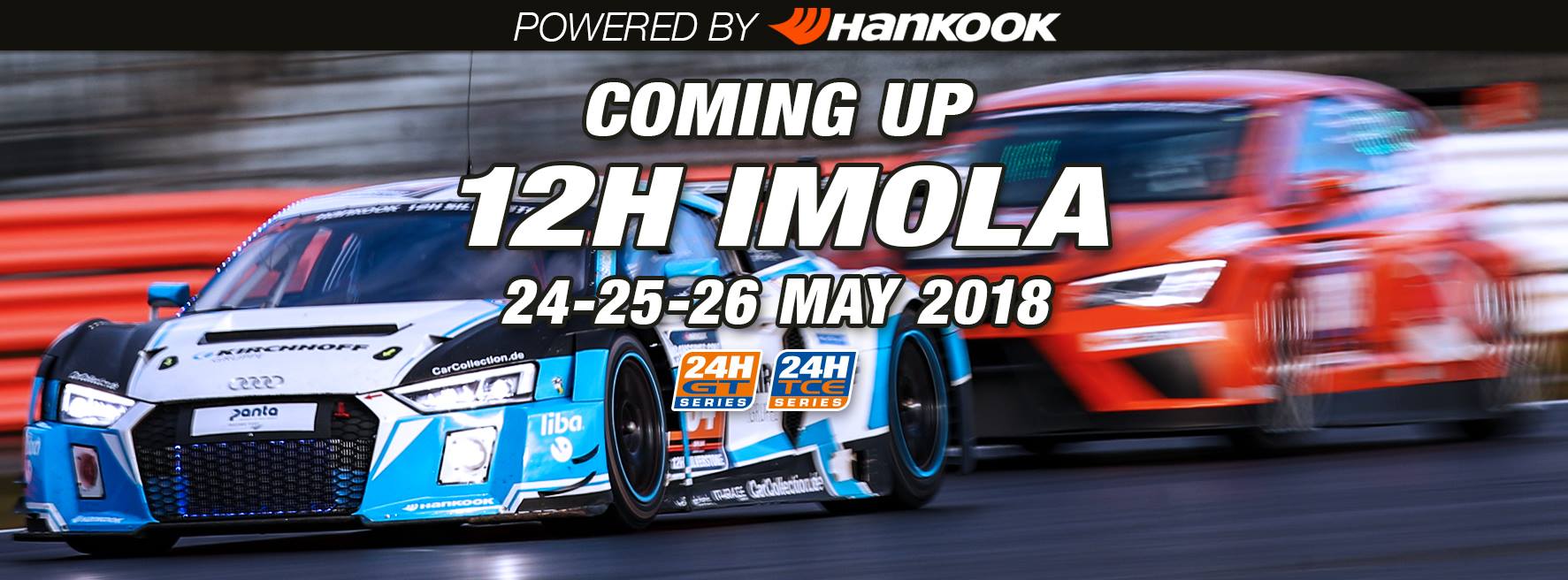 Time to finally get into driving and racing at Imola. Catch up on the story until now by checking out the previous posts on:
Time to finally get into driving and racing at Imola. Catch up on the story until now by checking out the previous posts on:
- My 1st professional race: getting the invitation and preparing for racing.
- Getting an FIA License
- Nerd eye view of the BMW M235i Racing we drove
I’ve been to Imola before. 2 years ago, we were in Italy for a hackathon week with my teammates on Track Attack, who are based out of the Friuli region, in the northeast area of Italy. My wife, 1-year old son and I spent a week in a tiny medieval town centrally located to Pisa and Firenze (Florence). One day, we took a day trip to Autodromo de Enzo I Dino Ferrari, also known as Imola.

Lamborghini was holding a private test event, but we were still allowed in, because technically, Imola is a city park. We walked the grounds, from the outside and inside the track. My favorite Top Gear episode of all time is the Imola episode, where the crew tries to match the lap time of the Stig’s Italian cousin. I drove Imola for the fist time in the Formula 1 car simulator at the Imola museum. I drove the track for 30+ hours in a Mercedes AMG GT3 on iRacing, to prepare. We did a track walk on Wednesday evening before the Thursday free practice.
It still scared the shit out of me.
Thursday, May 24th, 2018: Optional free practice
We signed up for the optional free practice. 2 sessions. 90-minutes each. 4 drivers. We decided to give each driver 20 minutes at each session. Seth would go out first and get a sense for the car and lay down some reference data for us to chase. And he did just that; a 2:06.XXX and not a single clean lap.
When I played football in high school, I was always scared, and I didn’t suck. Especially in the games. One of the coaches could sense it in me and other players, so he said once “half the battle is showing up. Just show up to compete and your training will take over.”
That is why I raised my hand and asked to go second. It was surreal, overwhelming and humbling. I’ve read articles from other first time and regular pro drivers, who have said that in these pro series, the time on track for getting up to speed is limited and regularly interrupted by incidents. To be honest, I shrugged those stories off and thought, “could it really be much worse than a competitive club racing weekend?” Yes. That is exactly how it is.
Not a single driver had a clean 20 minutes. None of us had a single lap where we weren’t being overtaken by at least a few cars.
This was our new reality and pretty much everything we articulated to explain our pace was an excuse. Dan Rogers, came up to speed the fastest outside of Seth, having a ton more experience (a 2:10.XXX best lap), then me (2:12.XX) and then Rob (2:16.XXX).
We reviewed data to look for places and ways to get up to speed but it was obvious. We were driving tentatively, over-slowing on pretty much every corner in general and especially when being overtaken, which was almost every corner.

All my racing has been multi-class racing, with rarely being in the fastest car on track but this is a whole other level. The closing speeds and acceleration of pretty much every other car was insane, especially the GT3 cars. The message from Seth was clear, though he tried to be gentle with us – time to drop excuses and drive. Yes, the other cars are faster, but we have to figure it out and at least mid-corner speed, we could hang with almost all the cars; Seth had already proved it. I was driving almost dangerously slow.
When it was time for the second session, it was the same, I got three (3) complete laps over a ~25 minute period. But I was determined to drive confidently and hard. A couple of 2:10.XXX on the last two laps and on the third lap, where I came into the pits due to another Code 60, I had a 2:09.XXX going, backed up by a rolling best lap of 2:09.269.
Dan would get down to a 2:08.XXX and Rob got down to a 2:10.XXX – we were all progressing! Seth would not drive the second session, to give us more seat time but he would qualify the next morning and start the race.
By the end of the day, we had no real idea how we stacked up against the competition. We only knew that we were improving at a good pace and that the 131 car had a stacked lineup of drivers, with one of them being the reigning European BMW Cup champion. He had been driving a specific M235i Racing car for close to two years and he was/is good.
Code 60: Your new best friend or mortal enemy
Instead of full course yellows, Creventic has “Code 60’s”. Purple flags come out, with a big circled 60 in the center. When the Code 60 comes out, all cars a required to slow down, in a smooth deceleration to no more than 60 Kmph. It’s intended to get cars down to a safe speed so whatever caused the incident can be cleaned up and maintain the gaps between the cars.

In the race, if a Purple 60 comes out and you are near the pits, it gives you an opportunity to swap drivers, change tires and/or fuel up while losing the least amount of track position. The other side of the blade though is that if you are past the pit exit, it will take up to 4 minutes to make it back to the pit entrance and in that timeframe, the issue might be cleaned up.
Cars do not bunch up for the restart, it’s a simple call for green flags when the Code 60 goes away. There are random radar guns around the track to check for speeding and they also look at your lap time for a complete lap of a code 60. If it is faster than a 4:55, you are penalized. We ended up serving a 12 second penalty one time during the race.
Friday, May 25th, 2018: Practice, qualifying and race part 1 (4 hours)
The next morning, we all went out and made improvements. I got down to a 2:08.643 in my only complete lap and then a code 60, with a 2:07.XXX on the board. Rob got down to a 2:09.XXX and Dan to a 2:06.XXX.
Next Seth went out to qualify and though we had strict orders to stay off the yellow curbing on all corners, so we could make sure the car survived the 12 hours, the restraints were off for Seth and he went hog wild! He got down to a 2:02.719, putting is in P2 for the race.
The race started off crazy but mostly clean! Seth was able to get a good start and stay in P2. He was in the car for just over 1 hour and 40 minutes and then a Code 60 came out and it was my turn. Being the driver on-deck, there were several false starts, where it was almost time to go but then not.
I got in the car, refueled and then got going. Generally, I was able to get up to my speed quickly, steadily improving lap times and topping out at consistent 2:07.xxx’s regardless of traffic. When I was at the fuel station, I was told on the radio to have my windows up, but that requirement was only during re-fueling, at the refueling station (we couldn’t refuel at our pit spot). I interpreted the message as “have them up at all times”, which meant I wasn’t feeding fresh air to the air-conditioned helmet blower. Somewhere after the 1 hour and 15-minute mark, the heat really started to get to me; everything was hot. Like a heat I’ve only experienced once before when my cool suit didn’t work in a PRO3 car and 100F weather. I figured I’d get the call at any minute to pit but no call and no Code 60. What would end up being about 90 minutes into the stint, I started shaking and getting cold shivers. I radioed in that I probably only had 10 or so more laps in me.
To be honest, I had no idea what was radioed back but it was not “ok, pit next lap”. I kept driving, trying to remain focused, keep a semblance of a pace and not crash. Finally, the call came in to pit. I thought it was because they realized that I was in bad shape, but it was because I was minutes away from going over the 2-hour at a time driving limit.

I come in to the pits, stumble out of the car, Rob goes in and I start looking for any source of hydration. About five minutes after being out of the car, I do a heart rate check on my Apple Watch and… 136BPM. Holy crap. And I am still on fire and can’t seem to drink enough water or the special Italian “Gatorade”. A few minutes later, back in the trailer changing, I get the news that Rob is in the beach after an incident with a GT3 car. With only ~4 minutes left in the first 4 hours, the workers do not pull us out of the beach and we can’t get it back to the pits for inspection and repairs. The first 4 hours come to an end we are down 3 laps from the lead.

An hour or so later, we were able to look at the car, from afar while it sat in parc ferme (impound).

Luckily, the car is in the corner and the Sorg crew checks it out and determines we have some bent and broken suspension components. This eliminates the option to have Dan start the race with the car as is, shake off the rocks and get a sense for how the car runs.
We decided to take a 10-lap penalty, so we could make repairs before the race restarts Saturday morning. That night we had an excellent spaghetti dinner at the Villa we stayed at (was built in 1420 and owned at one point by Napoleon Bonaparte’s grandmother) and finalized the plan.

We were P1 for a good chunk of part 1 of the race because of good luck with Code 60’s but our fastest pace was still slower than our main competition (#131). With the 10-lap penalty, all we could really do is put our heads down, put down clean laps, stay out of trouble and hope the endurance gods would punish the competition.
Saturday, May 26th, 2018: Race part 2 (8 hours)
Dan would start the race, put down solid laps, stay out of trouble and then hand over the car to Seth. Seth would go in and do the same, getting back as many laps as possible – hoping that Seth could match lap times with their fastest driver and we would be faster than the rest of their drivers.
Over the general race pace, that would end up being the case – we steadily clawed back laps from the 2nd place car but slowly we’d lose ground to the first place #131.

In the third stint, I went back in for what would end up being about 1 hour and 45-50 minutes, safely clear of the 2-hour driving limit. I was able to get up to speed even faster than Friday and in the second half of the stint, when the heat soak returned, and I realized the Camelback with a mix of water and Italian Gatorade was not connected to my helmet, something clicked. Something that Seth had been preaching to us for the past 24 hours (and will be reserved for another time). I trusted his advice and just did it, and the car didn’t go off into the dirt or in a wall – it held. The times started steadily falling, the 2:06’s started coming effortlessly, almost regardless of where traffic was interfering. And then, a 2:05.xxx! And then another 2:05 in the predictive lap timer but spoiled by traffic and another, spoiled by… me (I was getting greedy).

I was ecstatic but drained and as I’ll write about in another post, I didn’t have the stamina to sustain 2:05’s. I had already started driving with the windows cracked and on the straight-aways, I’d put my hand out of the window to funnel outside air in and help cool me down. The time went by much faster this stint and before I knew it, the call was in to pit. There was a Code 60 for a badly damaged car which would take 10-15 minutes to clear up, so though the Code 60 came out right after I had passed the pit entrance, I was able to circle back around and pit, under the Code 60 and Dan was able to get back in the car and on track before the green flag flew.
Dan had a great second stint, consistently hitting 2:07’s and staying out of trouble. We had clawed back more laps and with Seth going in for the closing stint, it would be close. Enough green flag running or advantageous Code 60’s is what we needed. Seth came out with a full head of steam and immediately started putting down 2:03’s and 2:04’s – getting back 8-12 seconds per lap to P2. With an hour left in the race, the cars started falling like flies. One car after another, breaking down on track or barely limping back to the pits for a repair but no Code 60. Finally, with about 15 minutes left in the race, one of the leading GT3 cars, a beautiful matte-red Mercedes AMG GT pulled to the side of the track with a collapsed front wheel. Even though it pulled off in a decently safe area, the Code 60 came out, leaving only a few minutes to finish the race and with that, our chances of P2 washed away.

After 8 hours, we had clawed back a full 10 laps and were only 20 seconds away from P2. Another few laps of green flag running… but that’s racing!

Podium finish to top off a great weekend
Despite not being able to claw back P2, we still made it on the podium and it was also my first experience actually standing on a podium, let alone the same podium and podium room that mega stars of racing have been in and stood on. Overall it was a great experience and looking forward to the next race, which we’re targeting the 24 hour race at Circuit of the Americas in November or possibly Barcelona in September.








 Before we get into the actual on-track action and the race, let’s talk about the car we drove for the 12 hours of Imola.
Before we get into the actual on-track action and the race, let’s talk about the car we drove for the 12 hours of Imola.





 So you want to go ‘Pro’ racing? Or maybe you want to have the license that gives you access to every regional sanctioning body in the US? Odds are, you’re going to need more than the regular regional racing license. And if it is international competition, you’ll very likely need an FIA (
So you want to go ‘Pro’ racing? Or maybe you want to have the license that gives you access to every regional sanctioning body in the US? Odds are, you’re going to need more than the regular regional racing license. And if it is international competition, you’ll very likely need an FIA (





